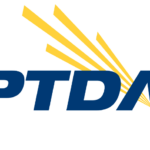Distributors face an ongoing challenge related to finding a qualified workforce.
They compete in a shallow pool of workers. For example, 73% of warehouses say they can’t find the help they need.
Distributors need to not only find more employees to fill skilled slots but also to work harder to retain the employees they do have. How can distributors tip the scales in favor of keeping their existing workforce?
Technology needs to be a part of the equation.
Technology is often characterized as a tool to enable businesses to reach their full potential. Distributors are increasingly considering new tools for automation, reduced labor costs or to stay competitive as customer expectations change. But how does technology affect your employees? Can better technology also have a positive impact on employee retention and hiring?
A Qualtrics report showed employees are 230% more engaged and 85% more likely to stay in a job longer than three years if they have the technology tools they need to do their job.
A study from Zapier showed 1 in 6 employees left their jobs because the employer didn’t give them the right technology tools to do their work.
This aligns with my observations and experience. We once worked with a distributor whose employees took four months to get up to speed on their legacy order-management system. Imagine if they quit halfway through that process?
Or if, after finally being comfortable with the technology, they quit three months later – only for the distributor to have to start over again. This was a very real problem for this distributor. When hiring they would target salespeople who knew the legacy technology over salespeople who knew their business, because it was easier for them to learn the business than the technology. This is not how things should work.
Attracting the right talent, and keeping them there, is tied to the employee experience you provide. That experience necessarily includes technology. Another distributor told me a story of a new vice president that left after a month on the job. His reason for leaving was he could not be successful in his new role with the technology that was available.
A critical part of this conversation needs to be the differences between newer, modern technology – which can contribute to employee recruitment and retention – and older legacy technology.
Older technologies tend to be more rigid, often dictating a step-by-step process that was often frustrating to employees. That also made training longer and harder, and consequences steeper if something went wrong.
New technology, by comparison, is more agile and streamlined. Tools today have a much more flexible foundation; the cloud enables software updates in just days rather than months or years – which means you can take advantage of new features and functionality quicker.
Sophisticated automation reduces manual work. For example, the number of steps a rep must take in a sales order could be reduced from dozens to one. AI and machine learning can help distributors quickly sort through piles of data to uncover opportunities that would otherwise collect dust in a data warehouse.
The focus of digital transformation for many distributors should be to improve experience – not just for customers, but for their employees, with a more intelligent operation.
So, what does new technology get you?
Harvard Business Review says if organizations “follow through on opportunities to improve their digital workplace experiences, employers set themselves apart as a great place to work amidst the war for talent, thus improving recruiting and retention efforts.”
In other words, if you implement the right technology, you’ll experience benefits downstream, both in employee engagement and company productivity. For example:
4 Benefits of Implementing the Right Technology
1. More efficient workflows
A significant advantage of technology use is the ability to streamline processes to increase productivity. Automation, centralized systems and collaborative tools significantly reduce manual workloads, allowing employees to focus on more meaningful tasks. By reducing mundane and repetitive work, technology empowers employees to be more engaged, motivated and satisfied with their jobs. This heightened sense of purpose and accomplishment can contribute to improved employee retention.
2. Better work-life balance
Technology revolutionized work-life balance, enabling employees who could work remotely with flexible schedules. The same tools are enabling distributors’ team members who are on the road a lot – such as field sales reps or technical specialists – to be more productive. The ability to work on the go or from home provides employees more autonomy and flexibility. Technology can also streamline end-of-day processes, which allows employees to go home quicker – improving their work-life balance.
3. Improved communication and collaboration
Technology transforms how teams work together, making communication more efficient and seamless regardless of their physical location, and strengthening team cohesion and engagement. Conversely, ineffective communication can lead to disengagement, ultimately increasing turnover rates.
4. Increased training and skill development
Technology can streamline and reduce the amount of time it takes to onboard an employee. This allows the employee to quickly become productive and feel like they are making an impact sooner. Technology can also facilitate personalized learning experiences for long-time team members. Employees who feel supported through technology-driven training initiatives are more likely to remain loyal to their organization and contribute to its success.
We should also consider the generational impact of modernizing your technology tools. Gen Z and Millennials (the oldest of whom are in their 40s) make up 46% of the workforce in the U.S.
Digital natives expect a certain level of technology in a new job. This expectation should play into distributors’ technology roadmap. Consider that 80% of Gen Z wants to work with cutting-edge technologies, according to Dell. And 91% report technology influences their decision-making when selecting a new job.
So, back to the original question: Can the right technology drive better employee retention and recruitment?
Based on my experience, the more complex and hard-to-learn a solution is, the worse the experience for an employee. On the flip side, a solution may not be complicated, but may require so many steps it slows an employee down. Take a customer service rep fielding calls. With an older system, that rep likely is visiting multiple screens during that call, or possibly isn’t able to finish a transaction in the moment because of the tools at hand.
After all that, they go home and make a one-click purchase on their Amazon app.
Embrace the simple and straightforward. Just as more parts in manufacturing means more opportunities for problems to crop up, the same is true for your employees. The simpler the tool, the better the employee experience.
Employees, like customers, have heightened expectations today. They want to experience at work what they experience in their personal lives. They don’t understand why it can’t be the same – why work is unproductive and inefficient when it doesn’t really need to be.
If you can help that employee – that human – be more successful, it will really matter both to their satisfaction at work and to your bottom line.
Related Posts
-
Once you attract talent to your business, what is your plan to keep them there?…
-
The ERP software provider Epicor has appointed Vaibhav Vohra as Chief Product and Technology Officer.
-
The two categories are belt drives and bearing accessories & tools, with an additional nine…






